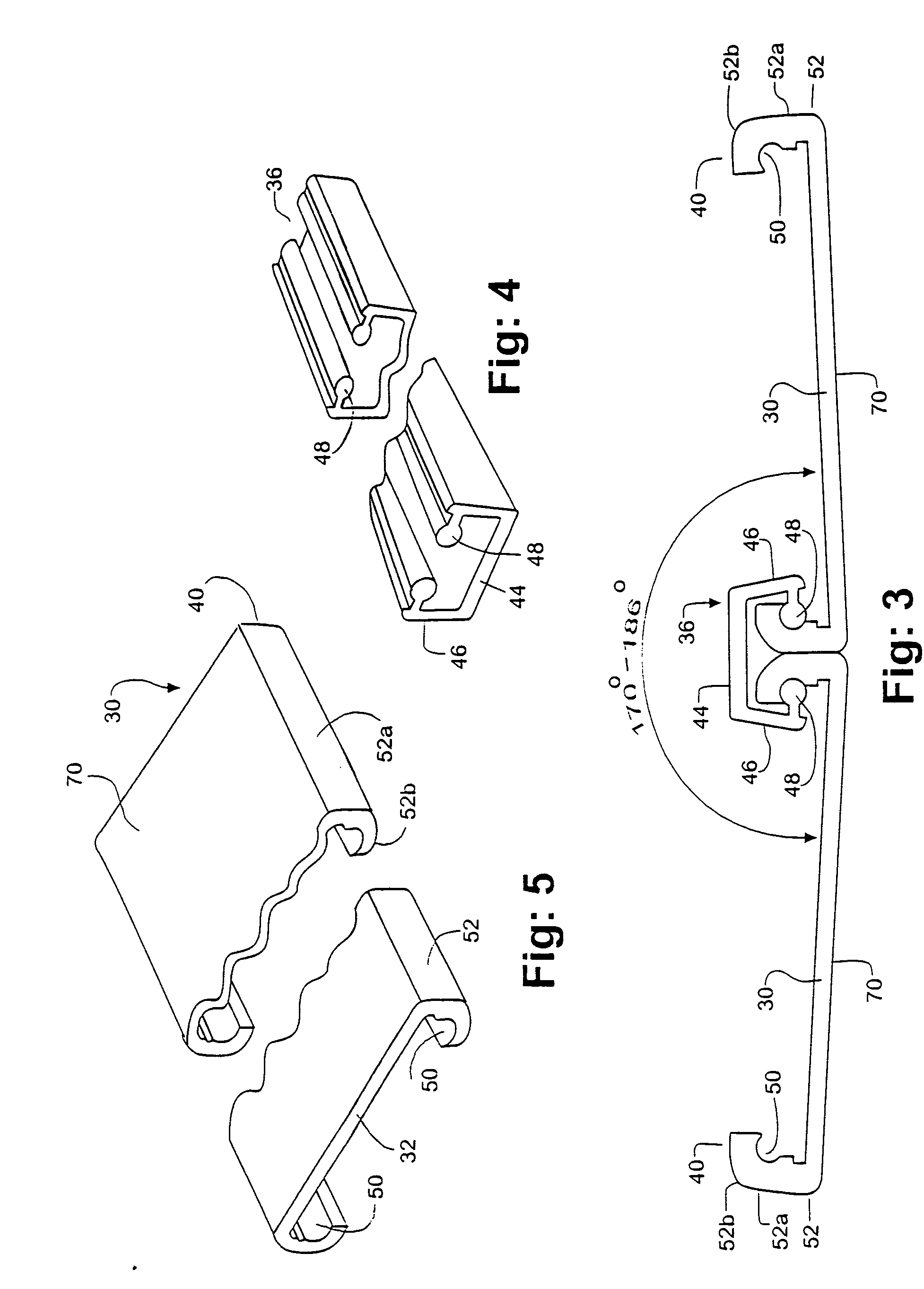Safety guard for hinged door
a safety guard and hinged door technology, applied in the direction of hinges, door/window fittings, building components, etc., can solve the problems of deficiency of prior devices in one or more respects such as cost, reliability or effectiveness, and ease of installation
- Summary
- Abstract
- Description
- Claims
- Application Information
AI Technical Summary
Benefits of technology
Problems solved by technology
Method used
Image
Examples
Embodiment Construction
[0031] Turning now to the drawings, FIG. 1 shows a door 12 pivotally joined to a doorjamb 14 by two or more door hinges, one of which is shown as 16, typically of conventional design. The door and the doorjamb may be made of wood, metal or plastic and their size, construction and details are well known in industry. When the door is closed, typically there is only a very small gap between the door and the jamb, often covered with a molding or trim piece. When the door is swung to the open position as shown in FIG. 1, a wedge-shaped gap 18 is created. This gap is easily large enough to accommodate the fingers or even the hand of an unsuspecting infant. Upon closing of the door, a tremendous amount of crushing or pitching force can be exerted against the finger, possibly with disastrous or at least very painful consequences.
[0032] Shown covering at least a portion of the gap 18 is a guard of the present invention. The details of the guard are not evident in FIG. 1. Suffice it to say t...
PUM
 Login to view more
Login to view more Abstract
Description
Claims
Application Information
 Login to view more
Login to view more - R&D Engineer
- R&D Manager
- IP Professional
- Industry Leading Data Capabilities
- Powerful AI technology
- Patent DNA Extraction
Browse by: Latest US Patents, China's latest patents, Technical Efficacy Thesaurus, Application Domain, Technology Topic.
© 2024 PatSnap. All rights reserved.Legal|Privacy policy|Modern Slavery Act Transparency Statement|Sitemap



